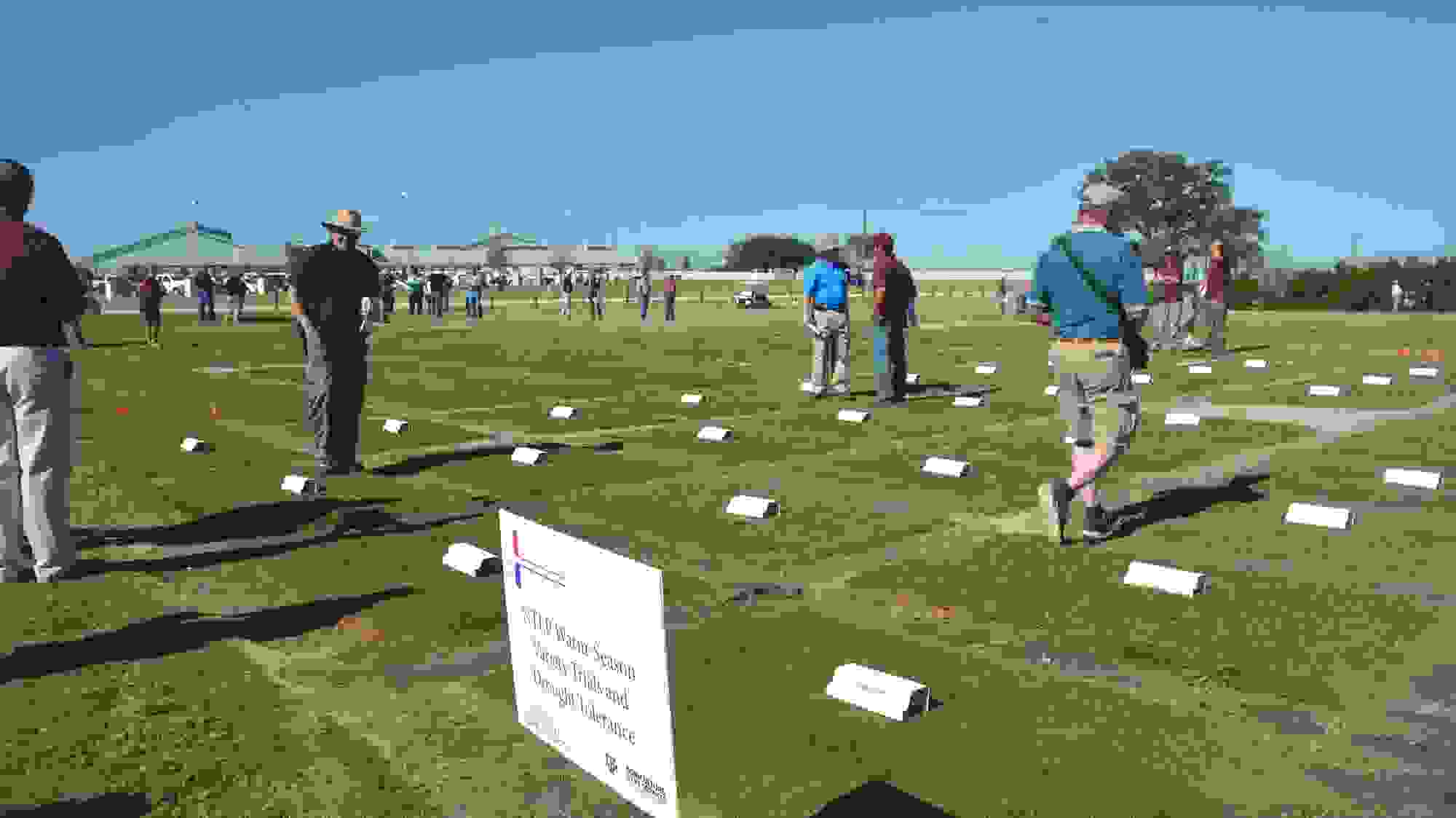Not every grass is a good fit for home lawns, golf courses or athletic playing fields, so turfgrass researcher Dr. Casey Reynolds is testing varieties and comparing them side by side under Texas conditions as a part of the National Turfgrass Evaluation Program (NTEP).
Reynolds, a Texas A&M AgriLife Extension Service turfgrass specialist in College Station, is joined by Dr. Matt Elmore, an AgriLife Extension turfgrass specialist, who is growing additional trials at the Texas A&M AgriLife Research and Extension Center at Dallas.
Reynolds said the AgriLife Extension trials at both locations include approximately 100 grass varieties, and the College Station trials were recently featured at the Texas A&M AgriLife Turfgrass and Landscape Field Day.
“The primary objective of these NTEP trials is to evaluate new and emerging varieties for their performance in southern and southeastern transition zone environments,” he said.
NTEP will take data from this location and data from throughout the United States at other cooperating universities and compile it.
“This way a producer or a customer or anyone who is interested in planting a new variety can look and see an independent source of data and use it to evaluate whether or not that grass is a good fit for their needs,” Reynolds said.
“For instance, we may have a zoysia grass that may do great in terms of how it performs under drought, and next to it one that may look a little better, but the data tells us it may not perform as well under drought,” he said.
According to Reynolds, NTEP is a great way to organize all that data and compare varieties.
That’s an important thing to understand when selecting a grass variety, Reynolds said, “because we all know in the southern United States drought is always an issue and will continue to be an issue. We certainly want to breed and select grasses that do well in hot, dry climates.”
Reynolds said it is important not to get hung up on having the latest new variety — sometimes if it is not broke, why try to fix it?
“With the data we collect, we try to do it in a manner that is going to be reflective upon how people are going to view these grasses when they get to their home or their golf course or athletic field and whether it is going to fit into their environmental conditions.”
More information can be found at aggieturf.tamu.edu. Read the full AgriLife Today news release for more details.

